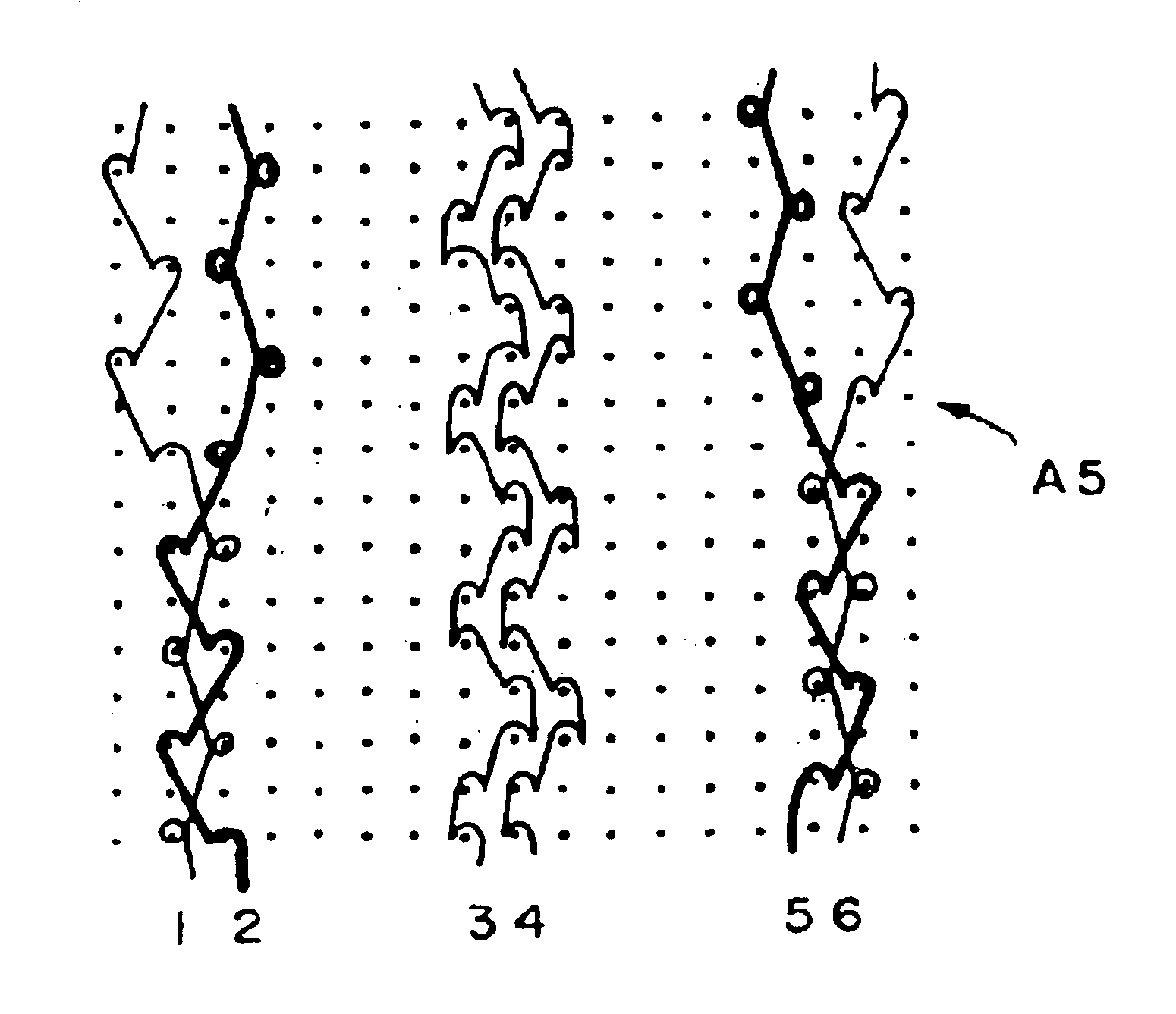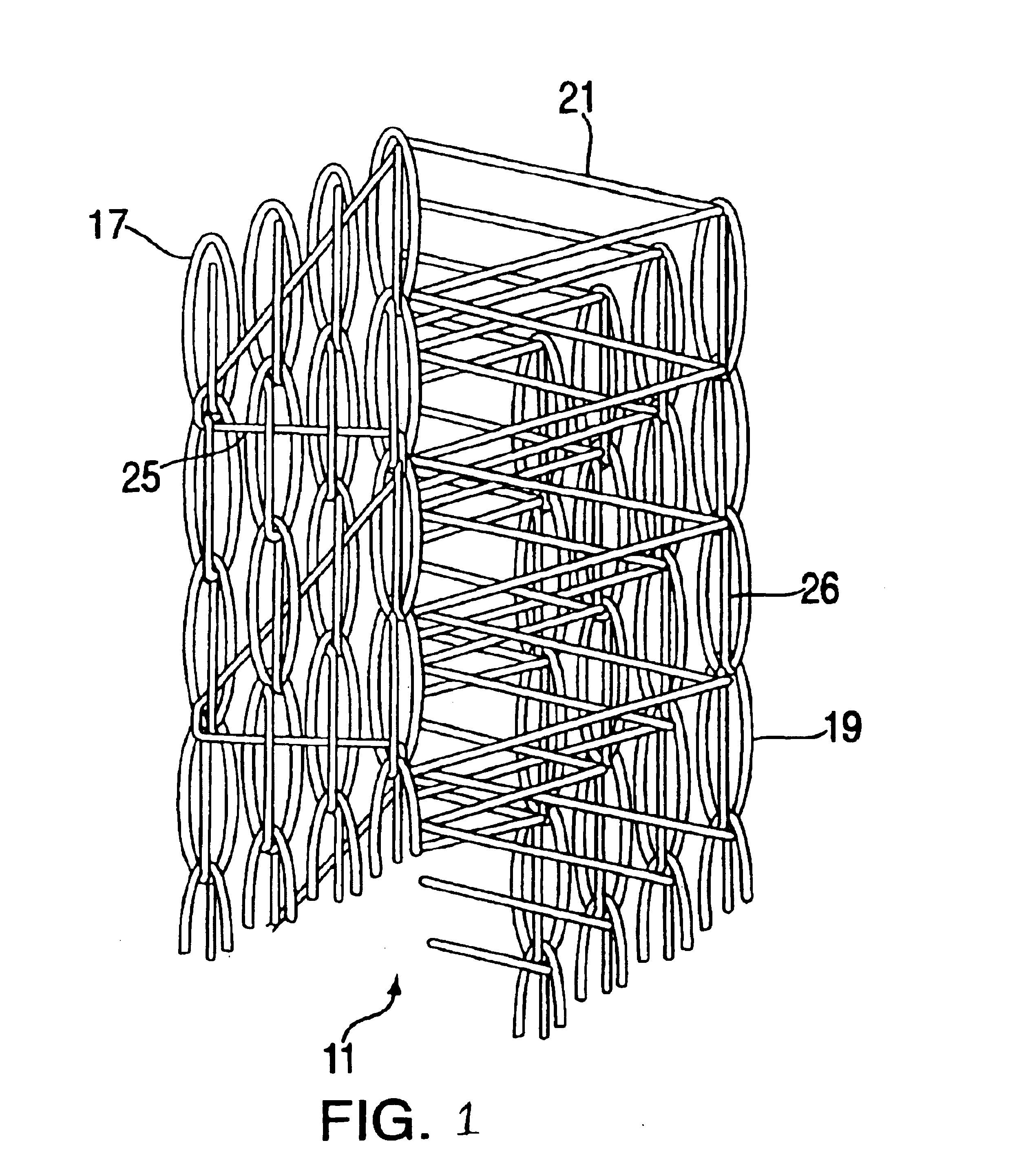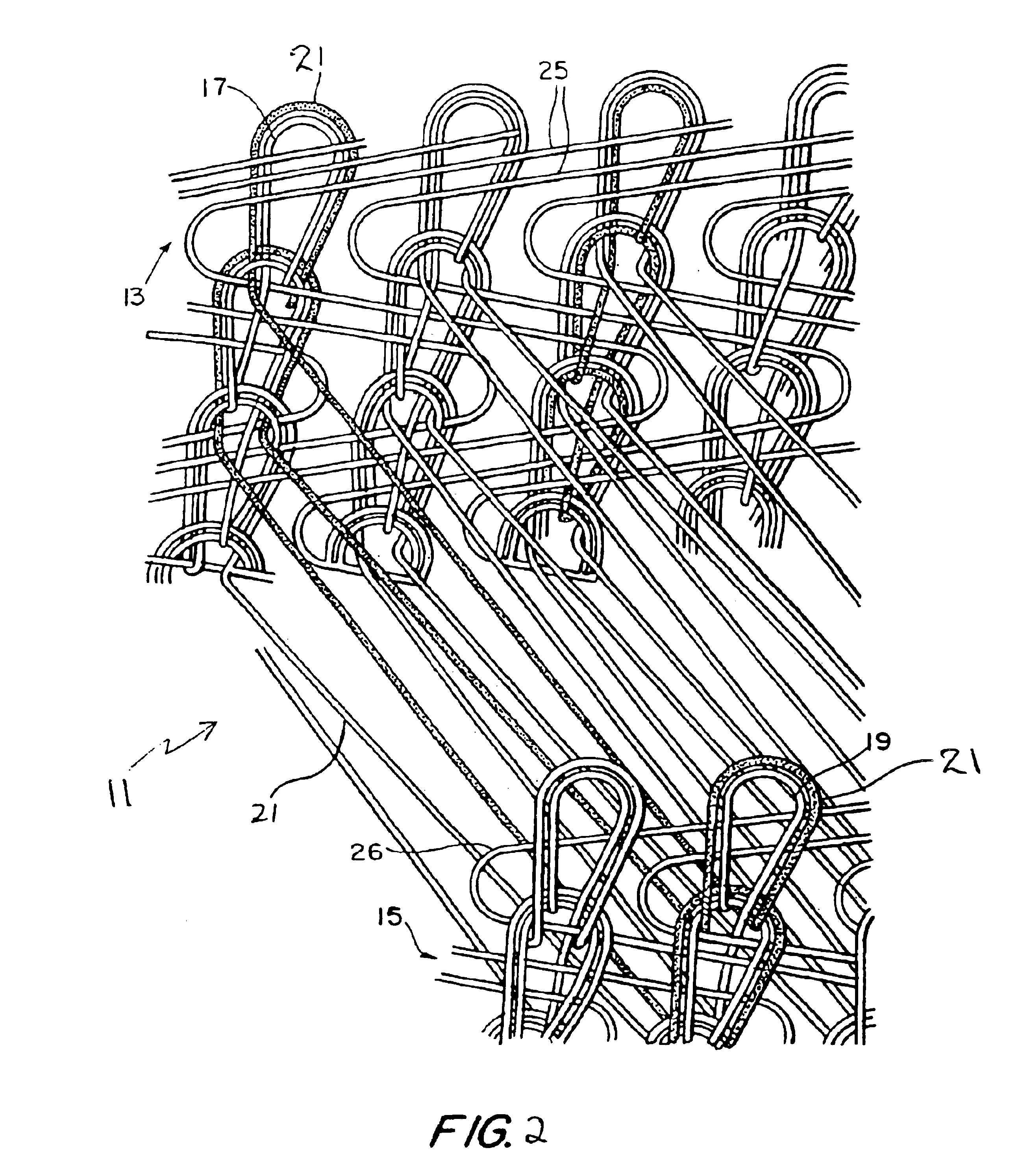Knit fabrics with face-to-back differentiation
- Summary
- Abstract
- Description
- Claims
- Application Information
AI Technical Summary
Benefits of technology
Problems solved by technology
Method used
Image
Examples
Embodiment Construction
Preferred fabrics of the invention are knitted using the knitting methods described in U.S. Pat. No. 5,855,125.
The double face fabric of the invention is prepared by first knitting a three dimensional knit fabric on a double needle bar warp knitting machine commonly used in the manufacture of single faced velvet and well known in the art. Referring to FIGS. 1 and 2, the knitting machine is used to knit a three-dimensional fabric 11 that includes a first fabric layer 13 made from stitch yarn 17, a second fabric layer 15 made from stitch yarn 19, and pile yarn 21 interconnecting the two fabric layers. In addition, knit fabric 11 includes backing yarns 25 and 26, which are knit into stitch yarns 17 and 19, respectively. As can be appreciated from FIG. 2, pile yarn 21 is plaited at one end around stitch yarn 19 and plaited at the other end around stitch yarn 17. This plaited construction facilitates the napping process performed on the technical face of each of the fabric pieces. By pla...
PUM
 Login to View More
Login to View More Abstract
Description
Claims
Application Information
 Login to View More
Login to View More - R&D
- Intellectual Property
- Life Sciences
- Materials
- Tech Scout
- Unparalleled Data Quality
- Higher Quality Content
- 60% Fewer Hallucinations
Browse by: Latest US Patents, China's latest patents, Technical Efficacy Thesaurus, Application Domain, Technology Topic, Popular Technical Reports.
© 2025 PatSnap. All rights reserved.Legal|Privacy policy|Modern Slavery Act Transparency Statement|Sitemap|About US| Contact US: help@patsnap.com



